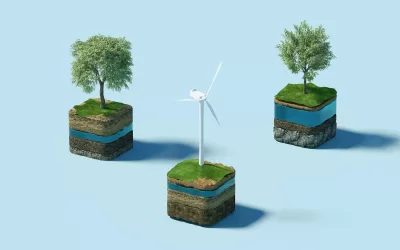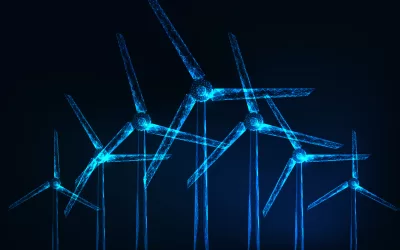If necessity is the Mother of invention, Mother Nature is taking over the lab. Setting aside any debates over the nuances of climate change, the data is in: Earth is a different place than it was 20 years ago, and it will continue to change at increasingly dramatic rates from here on. The issue is how we will adapt – and that’s as much a capitalist call to arms as it is a social one.
I won’t get into the stats, but the bottom line is that “as the oceans continue to heat up, effects will become more catastrophic…more powerful storms will become more common, and coastlines around the world will flood more frequently.” (New York Times)
As life goes on under harsher skies, those who conduct business as usual won’t make it very far. If you build a data center on the Gulf coast without considering increased flood risk, enjoy that inevitable loss. If your supply chain snakes through the country during winter storm season, your customer base better be a patient lot. If your investment portfolio doesn’t factor in environmental risk by weighing Environmental, Social, Governance (ESG) factors, you may want to lower performance expectations.
Look no further than power giant PG&E, which just this week said goodbye to its CEO and declared intent to file for bankruptcy, largely in response to liabilities from the Campfire wildfire that ravaged California in 2018. The severity of the fire is widely recognized as a result of climate change, and “PG&E could be on the hook for billions of dollars in liability costs related to last year and the prior year’s wildfires, far more than its insurance would cover…The mounting costs have led the company to consider bankruptcy.”
For those who are hip to the brewing/already arrived storm, business adaptation will come in both near-term and long-term forms. EY’s May 2018 report on climate risk and opportunity makes a compelling case, noting that “embedding climate risk and opportunities into corporate strategic thinking can have the potential to increase innovation, anticipate and stay ahead of policy changes, and improve operational efficiency and resources management.”
Long-term, for example, reducing dependence on fossil fuels creates more predictable energy costs and sets the stage for more reliable sourcing. That big picture fix is gathering momentum; in fact, Longview client Arthur D. Little’s recent study showed a significant global shift in consumer preference for electric vehicles, even if the US lags almost every other developed region.
But let’s talk near-term, because let’s face it – capitalism likes the short game. The first wave of climate-savvy businesses will tackle “adaptation imperatives.” Consider a few real-world examples:
- Jupiter: Measuring climate risk to adequately prepare both financially and structurally.
- Siemens: Planning more resilient urban infrastructure that can withstand both population growth and a more punishing climate.
- Nanostone Water (also a Longview client): Creating more reliable access to clean water with durable, dependable filtration systems that hold up under challenging conditions.
These are not social enterprises. They aren’t environmental causes or philanthropic endeavors seeking donations. These are businesses built for success in a new economy. In the same way that leaders sprang up to seize opportunities in the industrial revolution and the dot.com boom, capitalist visionaries will be on the front lines of climate risk.
We see 2019 as a crucial year for climate adaptation. Companies that are viewing the situation through a lens of opportunity should be thoughtfully crafting a message and market strategy that blends practical application, economic viability, and impact to our new way of life. It’s a balance that’s hard to achieve but critical to staying a step ahead.
If you’re ready to consider and promote your value proposition in the age of climate disruption, we can help – and we should get started. Mother Nature won’t wait up for you.




